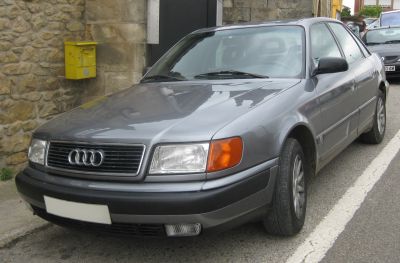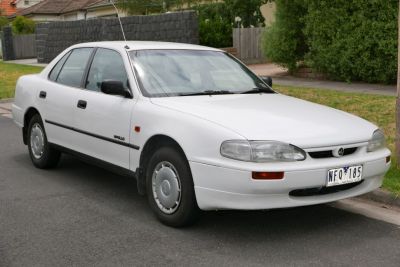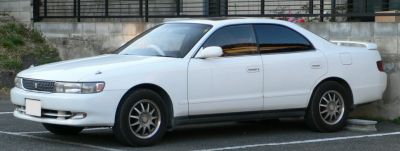 1957 Citroen ID I Dimensions, Size & Specs
1957 Citroen ID I Dimensions, Size & SpecsMeasurements of the 1957 Citroen ID I, engineered for optimal performance and comfort
| Dimensions | |
|---|---|
| Length: | 4800 mm189.0 in15.7 ft |
| Width: | 1790 mm70.5 in5.9 ft |
| Height: | 1470 mm57.9 in4.8 ft |
| Trunk Capacity: | 500 liter17.7 cu ft |
| Weight Specifications | |
| Curb Weight: | 1130-1175 kg2491-2590 lbs |
| Maximal permitted Weight: | 1630 kg3594 lbs |
The Citroen ID I, produced between 1957 and 1962, is a classic sedan that embodies mid-20th century French automotive design and engineering. With an overall length of 4800 mm (189 inches), a width of 1790 mm (70.5 inches), and a height of 1470 mm (57.9 inches), the ID I offers a spacious and elegant silhouette characteristic of its era. The curb weight varies between 1130 and 1175 kilograms (2491 to 2591 pounds), reflecting its compact yet sturdy build, while the maximum weight is rated at 1630 kilograms (3595 pounds), providing a balanced load capacity for passengers and cargo. The luggage compartment boasts a generous capacity of 500 liters (17.7 cubic feet), which is notably spacious for a sedan of its period and adds to its practicality as a family or touring vehicle. This combination of dimensions and weight emphasizes the Citroen ID I's blend of style, comfort, and utility. The sedan's design prioritizes passenger space and load versatility, making it comparable to other mid-sized cars of the late 1950s and early 1960s. Classic car enthusiasts and those interested in historical automotive sizes will find the Citroen ID I an intriguing study due to its unique blend of French elegance, robust dimensions, and functional luggage capacity.
Discover the standout features that make the 1957 Citroen ID I a leader in its class
Have a question? Please check our knowledgebase first.
The Citroën ID I, produced from 1957 to 1962, features a length of 4800 mm (approximately 189 inches), a width of 1790 mm (about 70.5 inches), and a height of 1470 mm (around 58 inches). These dimensions reflect its sedan body style, offering a spacious yet streamlined design typical of its era.
The Citroën ID I has a curb weight ranging between 1130 kg to 1175 kg (approximately 2491 to 2592 pounds), depending on specific configurations and equipment. Its maximum allowable weight is 1630 kg (about 3595 pounds), which includes the vehicle’s weight plus passengers, cargo, and fuel, indicating a solid build designed to support practical loads.
The Citroën ID I boasts a luggage capacity of 500 liters (about 17.7 cubic feet). This volume is quite generous for a sedan of its era, providing ample space for travel bags, groceries, or other cargo, making it practical for daily use as well as longer trips.
With a width of 1790 mm (70.5 inches), the Citroën ID I is relatively moderate in width compared to many modern sedans and SUVs, which often exceed 1900 mm (75 inches). This makes the ID I easier to maneuver and park in tight urban environments, although the car's overall length still requires careful consideration in smaller garages and parking spaces.
The Citroën ID I has a height of 1470 mm (58 inches), making it quite compact vertically by today's standards. Most standard garages have a clear height of around 2100 to 2400 mm (82.7 to 94.5 inches), so the ID I fits comfortably inside standard residential garages without any special accommodations.
At 4800 mm (189 inches) long, the Citroën ID I is longer than many contemporary mid-size sedans, which usually measure closer to 4600 mm. This extra length offers more interior space but can make parking and maneuvering in tight city spaces slightly more challenging, requiring more careful spatial judgment by the driver.
Compared to the Citroën Traction Avant, the ID I offers increased length and a slightly wider track, with the ID I measuring 4800 mm long and 1790 mm wide, while the Traction Avant was generally shorter and narrower. This increase in dimensions translated into more interior comfort, improved passenger space, and greater overall stability on the road.
During the late 1950s, the Citroën ID I's size was competitive in the executive sedan class. Its 4800 mm length and roomy luggage capacity of 500 liters were generous compared to many contemporaries, which often had smaller trunks and less interior room. Its aerodynamic design also contrasted with the bulkier shapes of rivals, giving it a unique blend of style and practicality.
The ID I's relatively large length and width gave it a stable ride, and combined with its advanced suspension system for the time, it offered superior comfort and road handling. Its spacious interior dimensions also enhanced passenger comfort on longer journeys, making it a well-rounded family or executive sedan in terms of both dynamics and usability.
The Citroën ID I’s weight, ranging from 1130 to 1175 kg (2491 to 2592 lbs), is relatively light compared to many modern sedans, which supports more efficient fuel consumption for its era. Paired with Citroën's air-cooled flat-four engine options, it provided balanced performance with reasonable power output and economy, ideal for both urban driving and longer trips during its production years.
Discover similar sized cars.

| Production: | 1955-1962 |
|---|---|
| Model Year: | 1955 |
| Length: | 4800 mm189.0 in |
| Width: | 1790 mm70.5 in |
| Height: | 1470 mm57.9 in |

| Production: | 1975-1985 |
|---|---|
| Model Year: | 1975 |
| Length: | 4725-4848 mm186.0-190.9 in |
| Width: | 1786 mm70.3 in |
| Height: | 1438 mm56.6 in |

| Production: | 1988-1998 |
|---|---|
| Model Year: | 1989 |
| Length: | 4785-4792 mm188.4-188.7 in |
| Width: | 1777-1814 mm70.0-71.4 in |
| Height: | 1422-1446 mm56.0-56.9 in |

| Production: | 1990-1994 |
|---|---|
| Model Year: | 1990 |
| Length: | 4790 mm188.6 in |
| Width: | 1777 mm70.0 in |
| Height: | 1431-1437 mm56.3-56.6 in |

| Production: | 1991-1996 |
|---|---|
| Model Year: | 1991 |
| Length: | 4725 mm186.0 in |
| Width: | 1770 mm69.7 in |
| Height: | 1420 mm55.9 in |

| Production: | 1991-1996 |
|---|---|
| Model Year: | 1991 |
| Length: | 4725 mm186.0 in |
| Width: | 1770 mm69.7 in |
| Height: | 1400 mm55.1 in |

| Production: | 1992-1996 |
|---|---|
| Model Year: | 1992 |
| Length: | 4750 mm187.0 in |
| Width: | 1750 mm68.9 in |
| Height: | 1390 mm54.7 in |

| Production: | 1992-1996 |
|---|---|
| Model Year: | 1992 |
| Length: | 4750 mm187.0 in |
| Width: | 1750 mm68.9 in |
| Height: | 1390 mm54.7 in |
